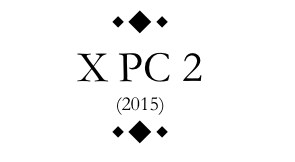Located off the northwest tip of Bird's Head Peninsula on the island of New
Guinea, in Indonesia's West Papua province, Raja Ampat, or the Four Kings, is an archipelago comprising over 1,500 small islands, cays, and shoals
surrounding the four main islands of Misool, Salawati, Batanta, and Waigeo, and the smaller island of Kofiau. Raja Ampat archipelago is the part of Coral
Trianglewhich contains the richest marine
biodiversity on earth. Raja Ampat or 'Four Kings',
is the name given to some islands in West Papua and comes from a local myth.
The four major islands are Waigeo, Misool (which is home to ancient rock painting),
Salawati, and Batanta. Raja Ampat is located in the bird head of the island of
Papua. Underwater enthusiasts flock to this
region because it offers the world's best marine sight. In the Raja Ampat islands, divers can explore
vertical underwater walls. The thrill of drift diving is another great challenge.
The territory within the islands of the
Four Kings is enormous, covering 9.8 million acres of land and sea, home to 540 types of
corals, more than 1,000 types of coral fish and 700 types of mollusks. This makes it the most
diverse living library for world's coral reef and underwater biota. According to a report developed
by The Nature Conservancy and Conservation International, around 75% of the
world's species live here.
When divers first arrive here their
excitement is palpable. It's common to hear people praise God as they take in the
remarkable scenery. Others prefer to remain in silence taking in the overwhelming sight of so many
islands with crystal clear water that softly brushes over the white sandy beaches
History
The name of Raja Ampat comes from local mythology
that tells about a woman who finds seven eggs.
Four of the seven eggs hatch and become kings that occupy four of Raja Ampat
biggest islands whilst the other three become a ghost, a woman, and a stone.
History shows that Raja Ampat was once a part of Sultanate of Tidore, an influential kingdom from Maluku. Yet, after the Dutch invaded Maluku,
it was shortly claimed by the Netherlands.
The first recorded sighting and landing by
Europeans of the Ampat Islands was in the person of the Portuguese navigator Jorge de Menezes and his crew in 1526, on route
from Biak,
the Bird's Head Peninsula, and Waigeo, to Halmahera (Ternate).
The English explorer William Dampier gave
his name to Dampier Strait, which separates Batanta island
from Waigeo island.
To the east, there is a strait that separates Batanta from Salawati.
In 1759 Captain William Wilson sailing in the East Indiaman Pitt navigated these waters and named
one strait Pitt strait, after his vessel; this was probably the channel between
Batanta and Salawati.
Population
The main occupation for people around
this area is fishing since the area is dominated by the sea. They live in a
small colony of tribes that spreads around the area. Although traditional
culture still strongly exists, they are very welcoming to visitors. Raja Ampat
people are more like Ambonese than Papuan people and now some of
them are Muslim and some of them are Christian.
Geography
Marine biodiversity of Raja Ampat
The oceanic natural resources around Raja Ampat
give it significant potential as a tourist area. Many sources place Raja Ampat
as one of their top ten most popular places for diving whilst it retains the
number one ranking in terms of underwater biodiversity.
According to Conservation International, marine surveys suggest that the
marine life diversity in the Raja Ampat area is the highest recorded on Earth.
Diversity is considerably greater than any other area sampled in the Coral Triangle composed of Indonesia, Malaysia,
Philippines, Papua New Guinea, Solomon Islands, and East Timor.
The Coral Triangle is the heart of the world's coral reef biodiversity, making
Raja Ampat quite possibly the richest coral reef ecosystems in the world.
The area's massive coral colonies along with
relatively high sea surface temperatures, also suggest that its reefs may be
relatively resistant to threats like coral bleaching and coral disease, which
now jeopardize the survival of other coral ecosystems around the world. The
Raja Ampat islands are remote and relatively undisturbed by humans.
The high marine diversity in Raja Ampat is strongly
influenced by its position between the Indian and Pacific Oceans, as coral and
fish larvae are more easily shared between the two oceans. Raja Ampat's coral
diversity, resilience, and role as a source for larval dispersal make it a
global priority for marine protection.
1,508 fish species, 537 coral species (a remarkable
96% of all scleractinia recorded
from Indonesia are likely to occur in these islands and 75% of all species that
exist in the world), and 699 mollusk species, the variety of marine life is
staggering. Some areas boast enormous schools of fish and regular sightings of
sharks, such as wobbegongs.
Raja Ampat Islands have at least three ponds
containt unpoisoned jellyfish, all in Misool area. Although accessing the
islands is not that difficult, it takes some time. It takes six hours flight
from Jakarta, the capital city of Indonesia to Sorong. Then, taking a boat to
reach the islands is necessary.
- Ahnaf Rizqullah Dwi Putra & Mohamad Dimas Henru Nurhadi


No comments:
Post a Comment